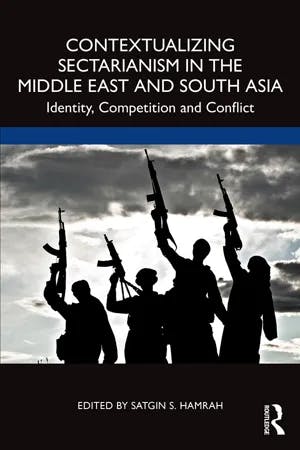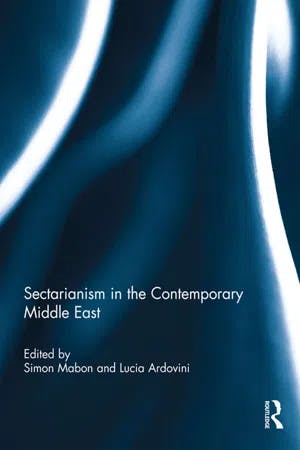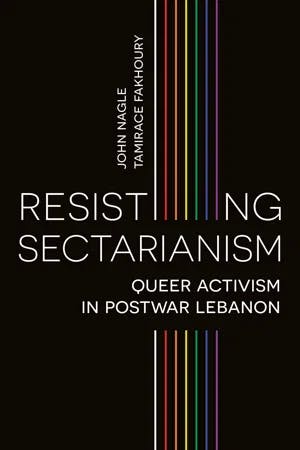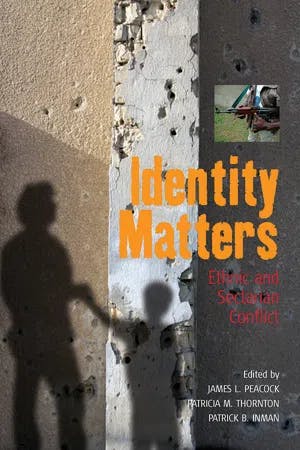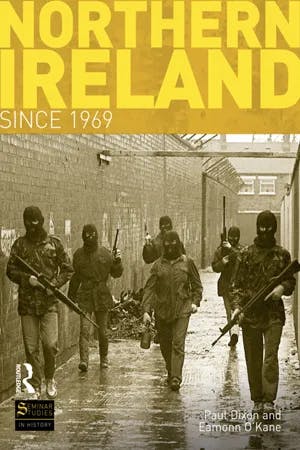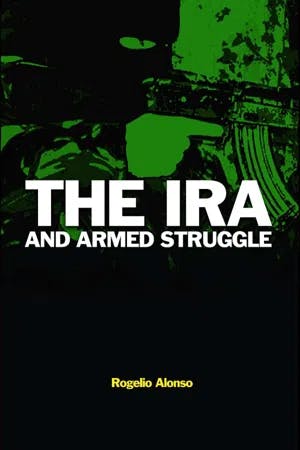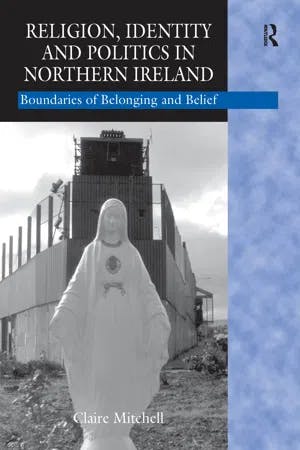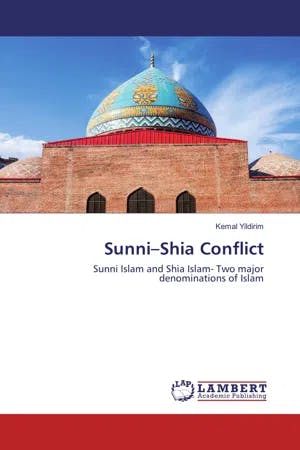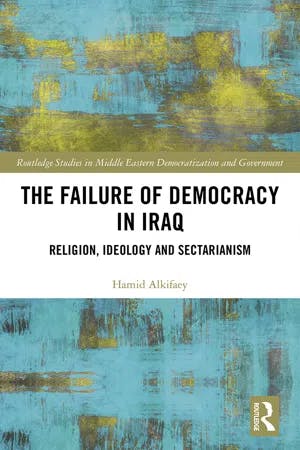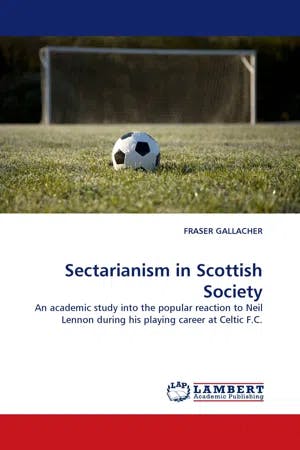What is Sectarianism?
MA, History (University of Edinburgh)
Date Published: 26.09.2023,
Last Updated: 26.09.2023
Share this article
Defining sectarianism
Sectarianism describes a political or religious conflict between groups within a community. Author Satgin Hamrah explains in Contextualizing Sectarianism in the Middle East and South Asia (2023), that when defining sectarianism, it is best to untangle the complexities surrounding the word,
Sect is understood as a socio-religious grouping. By extension sectarianism occurs when members of a different denomination within the same faith experience prejudice, hatred, and/or discrimination based on being from a different sect. This religious or sect-based affiliation often exists as a differentiated relationship to power and may have socio-political and/or security-based consequences. Sect-based religious identification and sectarianism have been recognized as having a so-called double function in terms of legitimation of power and privilege, as well as in protest and opposition. (2023)
Satgin Hamrah
Sect is understood as a socio-religious grouping. By extension sectarianism occurs when members of a different denomination within the same faith experience prejudice, hatred, and/or discrimination based on being from a different sect. This religious or sect-based affiliation often exists as a differentiated relationship to power and may have socio-political and/or security-based consequences. Sect-based religious identification and sectarianism have been recognized as having a so-called double function in terms of legitimation of power and privilege, as well as in protest and opposition. (2023)
Some of the key hallmarks of sectarianism include discrimination, prejudice, and exclusion arising in communities divided by difference. This often leads to social exclusion, political turmoil, and violence in the countries affected by sectarianism. Moreover, if one particular group in the conflict holds more political or economic power, this violence is often exacerbated. Members of a religious or political group might believe that their own salvation or objectives can be achieved through converts to their cause or that they may even need to get rid of dissidents within their own group.
At the heart of sectarianism lies the concept of identity. The role of identity in society has prompted discussions on whether identity constructs, like primordial or constructed, impact sectarianism in a community. In Sectarianism in the Contemporary Middle East (2018), authors Simon Mabon and Lucia Ardovini break down these two ontological positions,
Primordialists would argue that identities are ontologically given and fixed through biological factors coupled with territorial locations. Social norms and traditions then reinforce these identities. In contrast, the constructivist approach instead suggests that identities are imagined and constructed entities. They do so by building upon the work of Benedict Anderson, whose Imagined Communities advances the idea that a political community is an imagined construct, a product of modernity that was a consequence of ‘print capitalism’, which facilitated a group of people to coalesce around a shared vernacular. (2018)
Edited by Simon Mabon & Lucia Ardovini
Primordialists would argue that identities are ontologically given and fixed through biological factors coupled with territorial locations. Social norms and traditions then reinforce these identities. In contrast, the constructivist approach instead suggests that identities are imagined and constructed entities. They do so by building upon the work of Benedict Anderson, whose Imagined Communities advances the idea that a political community is an imagined construct, a product of modernity that was a consequence of ‘print capitalism’, which facilitated a group of people to coalesce around a shared vernacular. (2018)
Mabon and Ardovini insist that in order to understand sectarianism in a society, it is vital to consider these ontological positions alongside politics and religion, realizing that sectarian identities are in fact malleable and are often manipulated for political/religious means. As this manipulation manifests, violence then emerges.
How sectarian conflicts arise
Sectarian conflicts can be defined as violent conflicts between religious or political groups. It can also refer to violent conflict between groups over differing philosophical beliefs. If a group feels like their economic or political prowess is declining, they may resort to attacking or killing members of the other group who they believe are responsible for these issues. Sectarian groups may even try to control what jobs people get in communities or even control the media.
In Resisting Sectarianism (2021), authors John Nagle and Tamirace Fakhoury explain that sectarianism can impact all aspects of life in a community, infiltrating even the most basic civilian needs,
Sectarianism is recharged on a daily basis when individuals are forced to seek welfare and basic services from local sectarian leaders or when they apply for public jobs allocated according to sectarian quotas; it is made manifest through the threats of violence and rhetoric deployed by sectarian parties and in the divisive and emotive strategies they use to mobilize their constituency in electoral campaigns; it is relentlessly echoed in the commentary and content of the media channels owned by the sectarian parties. (2021)
John Nagle & Tamirace Fakhoury
Sectarianism is recharged on a daily basis when individuals are forced to seek welfare and basic services from local sectarian leaders or when they apply for public jobs allocated according to sectarian quotas; it is made manifest through the threats of violence and rhetoric deployed by sectarian parties and in the divisive and emotive strategies they use to mobilize their constituency in electoral campaigns; it is relentlessly echoed in the commentary and content of the media channels owned by the sectarian parties. (2021)
In Identity Matters (2007), authors James Peacock, Patricia Thornton, and Patrick Inman explain that sectarian conflict ultimately challenges everyone in the community, including minorities, majorities, and those who control the state. However, the groups being targeted and being deprived of basic needs may revolt against the oppression they face. As political sides seek to coerce and control communities in order to avoid violence, they instead create the very violence they are trying to prevent,
Ethnicity and sectarianism have often been understood as factors to be controlled and suppressed in order to avoid intergroup violence. Empires have incorporated conquered peoples into their own social structures, sometimes respecting their religions and customs, sometimes suppressing them. (Peacock, Thornton, and Inman, 2007)
Edited by James L. Peacock, Patricia M. Thornton & Patrick B. Inman
Ethnicity and sectarianism have often been understood as factors to be controlled and suppressed in order to avoid intergroup violence. Empires have incorporated conquered peoples into their own social structures, sometimes respecting their religions and customs, sometimes suppressing them. (Peacock, Thornton, and Inman, 2007)
As communities feel they are being controlled and manipulated due to their ethnicity, culture, religious beliefs, or political views, these communities will begin to demand fair treatment, sometimes resorting to violence to stand up against their oppressors. Oppressors may use various discriminatory practices against groups or communities as a form of control and these practices can manifest in many different ways. For a specific example of a sectarian conflict, this guide goes on to provide a case study on The Troubles in Northern Ireland further down the article.
How sectarianism manifests
Sectarianism can manifest in various forms, through targeted violence, segregation (separation) of communities, armed rebellion against a larger authority, or even insurgency. Though this list is not exhaustive, sectarianism can also manifest through such issues as:
- Genocide refers to the intent to destroy national, racial, political, ethnic, or religious groups. According to the UN, this destruction includes killing members, causing harm to members of the group through emotional and physical trauma, and imposing discriminatory measures on members of a group, like intentionally preventing births within a group.
- Racism refers to exclusion, distinctions, and restrictions based on race, skin color, nationality, ethnic origin, and descent. As stated by the UNHCR, racial discrimination takes away people’s human rights and fundamental freedoms in politics, economics, society, and culture. For more information on racism, see our study guide on Critical Race Theory.
- Xenophobia is discrimination based on the attitude that another person or a group of people are foreigners and thereby originate from outside a community or group. According to the UNHCR, people’s physical characteristics, immigration status, and ancestry can make people targets of xenophobic hate crimes.
- Pillarization refers to the separation of citizens into groups based on politics or religion. As described by author Staf Hellemans in “Pillarization (‘Verzuiling’). On Organized ‘Self-Contained Worlds’ in the Modern World,” in the Netherlands, for instance, Protestant, Catholic, socialist, and liberal “pillars” divided society from the late nineteenth century up to the late twentieth century and each “pillar” had its own social institutions and social organizations.
- Identity Politics, while the term is complex, refers to political activity that is based on identity related to race, ethnicity, religion, nationality, gender, sexuality, or social class. Author Cressida Heyes in “Identity Politics” explains that while identity politics may try to be perceived as inclusive and authentic, it may end up being divisive and can ultimately create an oppressive hierarchy.
Manifestations of sectarianism ultimately target people’s identities, with division and separation at the core of these sectarian issues and atrocities.
Key origins of sectarian conflict
While the concept of sectarianism is complex, sectarian conflict is often labeled as either political or religious in nature. However, religious sectarian conflict might have elements of political or even cultural sectarianism within the conflict, and vice versa. Political and religious sectarianism manifest in violent conflicts around the world and often adopt similar issues, like identity, with people on both sides of the conflict feeling discriminated against. Here we will highlight examples of religious sectarianism in Northern Ireland and the Middle East as well as an example of political sectarianism in Iraq specifically.
Examples of religious sectarianism
- The Troubles (1960s - 1998)
A key example of religious sectarianism includes the conflict between Catholics and Protestants in Northern Ireland. In Northern Ireland, sectarianism generally occurs between those who belong to the Christian religions, Protestantism and Catholicism. As explained in their work Northern Ireland Since 1969 (2014), authors Paul Dixon and Eammon O’Kane indicate that primarily, though not exclusively, Protestants identify as unionists, a group of people who believe in the continued union of England, Scotland, Wales, and Northern Ireland as one sovereign state, and broadly wish for peace. On the other hand, Catholics primarily, though once again not exclusively, identify as nationalists, those who want a united Ireland, separate from the United Kingdom of Great Britain and Northern Ireland and who generally wish to achieve this goal through non-violent means. Unionists might identify as loyalists, those who pledge allegiance to the British crown or the United Kingdom and will use militant methods to defend the crown, while nationalists might refer to themselves as republicans, those who wish to be part of the republic of Ireland and who will use violence to get there. At the heart of these sectarian tensions lay the concept of discrimination,
Unionists tended to play down the extent of discrimination and, therefore, the responsibility of the UUP [Ulster Unionist Party], which had ruled Northern Ireland continuously since partition. Nationalists tended to play up the issue of discrimination as it was a useful tool in the propaganda war during the civil rights struggle and some republicans used it as a justification for their violence. (2014)
Paul Dixon & Eamonn O'Kane
Unionists tended to play down the extent of discrimination and, therefore, the responsibility of the UUP [Ulster Unionist Party], which had ruled Northern Ireland continuously since partition. Nationalists tended to play up the issue of discrimination as it was a useful tool in the propaganda war during the civil rights struggle and some republicans used it as a justification for their violence. (2014)
As tensions grew over many years and conflict erupted, what would become known as The Troubles, a period of violent sectarian conflict in Northern Ireland that lasted from the late 1960s until 1998, began. Paramilitary groups, units outside the legitimate armed forces who use similar tactics and training and complete missions that a country’s armed forces would not usually take part in, became commonplace. In The IRA and Armed Struggle (2007), Rogelio Alonso explains that in Northern Ireland, the Irish Republican Army (IRA) supported republican agendas while the Ulster Volunteer Force (UVF) and Ulster Defence Association (UDA) supported loyalist agendas. The IRA had existed for years on the island but as violence in the north grew, a splinter group called the Provisional Irish Republican Army (Provos) focused its attention on the cause in the North. The Provos especially saw the Protestant community as the enemy, along with the police and British army (as instruments of Britain) and the Provos would go to any lengths to recruit volunteers,
In most cases, they [volunteers] joined the IRA at an impressionable and emotionally immature age, when they were much more likely to take the wrong decision, often without weighing up other factors that would have made their choice a more reasoned one. After recruitment, the procedures put into practice were aimed at reinforcing opinions that had hardly been thought through, so that recruits had drilled into them the comforting guarantee that the violence perpetrated was a response to a political need rather than a criminal impulse. Indoctrination demanded from volunteers their involvement in the armed struggle, driving them on towards an elusive victory, since otherwise the sacrifices made would have been in vain. Giving up the armed struggle was stigmatised because violence should only stop once victory was achieved. (Alonso, 2007)
Rogelio Alonso
In most cases, they [volunteers] joined the IRA at an impressionable and emotionally immature age, when they were much more likely to take the wrong decision, often without weighing up other factors that would have made their choice a more reasoned one. After recruitment, the procedures put into practice were aimed at reinforcing opinions that had hardly been thought through, so that recruits had drilled into them the comforting guarantee that the violence perpetrated was a response to a political need rather than a criminal impulse. Indoctrination demanded from volunteers their involvement in the armed struggle, driving them on towards an elusive victory, since otherwise the sacrifices made would have been in vain. Giving up the armed struggle was stigmatised because violence should only stop once victory was achieved. (Alonso, 2007)
The paramilitary groups oftentimes used guerrilla warfare, a type of warfare in which paramilitaries will use tactics like ambushing, terrorism, raids, sabotage, and other forms of rebellion to fight against other paramilitary groups or the police force. As violence between the paramilitary groups grew, so did the hysteria in the Protestant and Catholic communities in Northern Ireland. Claire Mitchell in Religion, Identity and Politics in Northern Ireland (2017), explains that loyalist and republican paramilitaries bombed public spaces, with citizens becoming caught in the mayhem. Rioting was common in cities like Belfast as families on both sides of the conflict mourned the loss of family members who were either fighting in the paramilitary groups or were caught in the crossfires of violence. Communities in Belfast were separated by wires, brick, concrete, and steel barriers that became known as “peace walls,” which essentially segregated nationalist and unionist communities. Religion was indeed a boundary marker,
But what is significant is that religion, whilst never universally practised or doctrinally coherent, has over time come to be the most entrenched signifier of the communal boundary in Northern Ireland. (2017)
Claire Mitchell
But what is significant is that religion, whilst never universally practised or doctrinally coherent, has over time come to be the most entrenched signifier of the communal boundary in Northern Ireland. (2017)
In the end, after the signing of the The Good Friday Agreement in 1998, it has been noted that over 3600 people lost their lives during the Troubles, many of them citizens.
- Modern Sunni v Shia conflict (1979 - present)
Another example of religious sectarianism can be found in the religious conflict between Shia and Sunni Muslims in the Middle East. For over a thousand years, a divide has existed within these two sects of Islam. Both sects believe in the fundamental beliefs and practices of Islam, but differ on who should succeed the Prophet Muhammad as leader of the Islamic faith. As noted in Sunni-Shia Conflict(2017), Kemal Yildirim explains that Sunni Muslims make up most of the world’s Muslim population, with 85-90% of Muslims identifying as Sunni and 10-15% identifying as Shia. In countries led by Sunnis, the Shia population tend to be poorer than the Sunni population. Shia Muslims see themselves as victims of oppression and discrimination with many ordered to be killed by Sunni extremists, who see Shias as being heretics,
In Syria, Iranian troops, Hezbollah fighters and Iranian-backed Shia militiamen have been helping the Shia-led government battle the Sunni-dominated opposition. Sunni jihadist groups, including Islamic State (IS), have meanwhile been targeting Shia and their places of worship in Syria and neighbouring Iraq. In January 2016, the execution by Saudi Arabia of a prominent Shia cleric who supported mass anti-government protests triggered a diplomatic crisis with Iran and angry demonstrations across the Middle East. (2017)
Kemal Yildirim
In Syria, Iranian troops, Hezbollah fighters and Iranian-backed Shia militiamen have been helping the Shia-led government battle the Sunni-dominated opposition. Sunni jihadist groups, including Islamic State (IS), have meanwhile been targeting Shia and their places of worship in Syria and neighbouring Iraq. In January 2016, the execution by Saudi Arabia of a prominent Shia cleric who supported mass anti-government protests triggered a diplomatic crisis with Iran and angry demonstrations across the Middle East. (2017)
Starting in the late 20th century, the schism between the two sects deepened, causing extreme violence across the Middle East as factions of Sunni and Shia Islam battled for political and religious supremacy. Yildirim explains that Sunni-Shia relations have been marked by an increase in conflict, particularly concerning the Iran-Saudi Arabia proxy conflict. Sectarian conflict continues to occur from Pakistan to Yemen, with tensions between the communities increasing when power struggles ensue. Struggles like the Bahraini uprising, the war in Iraq, and the Syrian Civil War, as Syria has launched a genocide against Shias, are examples of sectarian conflict.
Examples of political sectarianism
- Iraq (2003 - present)
A notable example of political sectarianism is the sectarian conflict in Iraq. According to Hamid Alkifaey in The Failure of Democracy in Iraq (2018), the regime change in Iraq in 2003 ushered in an identity crisis amongst Sunni Muslims. The Sunnis found it difficult coping with their loss of power, control, and influence in Iraq. Therefore insurgent groups, utilizing the anger, fear, and dismay amongst Sunnis, began recruiting fighters to join their cause and revolt. Sectarian politics became commonplace,
Sectarianism has become a source of polarization, prejudice and intolerance which contributed to undermining social peace between Iraqi communities, turning diversity into an arena of inter-communal rivalry and discord rather than serving as an indicator of cultural richness and an opportunity for building networks of inter-communal harmony, dialogue and cooperation. (2018)
Hamid Alkifaey
Sectarianism has become a source of polarization, prejudice and intolerance which contributed to undermining social peace between Iraqi communities, turning diversity into an arena of inter-communal rivalry and discord rather than serving as an indicator of cultural richness and an opportunity for building networks of inter-communal harmony, dialogue and cooperation. (2018)
In December 2011, when American forces left Iraq, the provincial council within Salahudden, a Sunni province, commanded that it receive a federal region. The council submitted a request to the Central government to conduct a plebiscite, or a direct vote from members of an electorate to vote on a public issue, in the province over federalism. However, the government refused to agree to the plebiscite, saying it would create tension and unrest across the country. This angered Sunni Muslims, who were unhappy with this arrangement and wanted not only a federal entity but more say in their government. Then less than two years later, in January 2013, protests began in Anbar, a western Sunni province. Protests lasted a year until the Iraqi army entered the province and dispersed insurgent groups. The government of PM Al-Maliki, which was Shia-controlled, became even more disinterested in supporting Sunni causes because it felt that the Sunnis were trying to weaken Shia influence and restore their own control in the country. Tensions between the Shia backed government and Sunni population grew and only settled once Al-Maliki was forced to step down in August 2014. However, Sunnis still call for their own federal entity and political unrest ensues. In elections since 2003, it has been established that most people vote on sectarian grounds (Alkifaey, 2018).
Alkifaey goes on to to express the issues that sectarianism in Iraq has caused for the nation as a whole,
It [sectarianism] has also contributed to the creation of a dysfunctional state and democratic system. Contaminated by sectarianism, the institution of democratic politics in Iraq became a source for political instability rather than a mechanism for channeling societal interests and meaningful citizen participation in the selection of government and determining its policy. (2018)
Political sectarianism, like religious sectarianism, impacts all aspects of society and can lead to utter devastation. It destroys the concept of democracy and ultimately creates instability in a community.
Sectarianism in sports - Celtic vs. Rangers
While sectarianism manifests through such issues as genocide, targeted violence, and xenophobia, amongst others, it can also manifest through more quotidian aspects of culture, such as sport. In some countries, like Scotland, sectarianism in sport is prevalent. According to Fraser Gallacher in Sectarianism in Scottish Society (2011), sectarianism in Scottish society dates back hundreds of years, starting around the time of the Scottish Reformation of 1560 when Protestantism began to supersede Roman Catholicism in the country. Anti-Catholic sentiment began to permeate Scottish society, leading to sectarian tension. Events such as the Battle of the Boyne in 1690 led to more sectarian conflict and many Protestants in modern Scotland still celebrate the battle with parades and support from the Orange Order, a Protestant fraternal organization that has deep roots in Protestantism and occasionally anti-Catholic sentiment from its members, originally based in Northern Ireland. In the mid-19th century, mass immigration from Ireland to Scotland, due primarily to the Irish potato famine of 1846, created even more tension as many of these Irish immigrants were Catholic (Gallacher, 2011).
With these sectarian issues in mind, it is unsurprising that sectarianism began to invade various aspects of Scottish culture, including sport. In Scottish sport, sectarianism most prominently appears in the rivalry between Celtic F.C. and Rangers F.C. in Glasgow. Celtic and Rangers represent separate religious groups, as Celtic represents the Irish-Catholic community and Rangers represent the Scottish-Protestant community. By the 1880s, football was popular in Scotland and Brother Walfrid, a member of the Catholic Marist Order, saw football as an opportunity to raise money for the destitute Irish-Catholic community in the East End of Glasgow. Celtic F.C. became known as “The Irishmen” for the Irish-Catholic community that it represented. After Celtic had a successful first year, the Scottish-Protestant community called out for a team to beat them, as anti-Catholic sentiment loomed, and Protestants began to support the Rangers. Identity became a focus for football supporters and to this day, sectarian issues relating to identity, politics, and religion can be heard through Celtic and Rangers songs,
Rangers’ fans can be heard making references to ‘King James and all his rebel scum’ and proclaiming to be ‘up to our knees in Fenian blood’. These songs are openly anti-Catholic, reflecting the historical anti-Catholic nature of Scottish society. The songs heard from Celtic supporters tend to be more political in nature, referring to Ireland’s struggle for independence from British rule. The two separate communities that Celtic and Rangers encapsulate for their supporters are evident in Celtic fans’ singing of the Irish national anthem, ‘The Soldiers’ song’, which is opposed by Rangers’ fans through the singing of ‘God Save the Queen’ and ‘Rule Britannia.’ (2011)
Fraser Gallacher
Rangers’ fans can be heard making references to ‘King James and all his rebel scum’ and proclaiming to be ‘up to our knees in Fenian blood’. These songs are openly anti-Catholic, reflecting the historical anti-Catholic nature of Scottish society. The songs heard from Celtic supporters tend to be more political in nature, referring to Ireland’s struggle for independence from British rule. The two separate communities that Celtic and Rangers encapsulate for their supporters are evident in Celtic fans’ singing of the Irish national anthem, ‘The Soldiers’ song’, which is opposed by Rangers’ fans through the singing of ‘God Save the Queen’ and ‘Rule Britannia.’ (2011)
Closing thoughts
Sectarianism is exacerbated by differences in religion and political views and it can lead to discrimination, prejudice, and exclusion in communities, ultimately creating sectarian conflict. Sectarianism may lead to violence and even death, as seen through the religious sectarianism in the Sunni-Shia conflict in the Middle East, Northern Ireland’s Troubles, and the political sectarianism in Iraq. These examples can be lessons for communities and countries as they are examples of how sectarianism can creep into society through political agendas and cultural/religious prohibitions, culminating in deadly atrocities that change communities forever. These examples also show how historical sectarianism can only be overcome with a cross-community commitment to a shared future with an emphasis on equal rights for all citizens, regardless of background.
Further sectarianism reading on Perlego
A Short History of the Troubles (2014) by Brian Feeney
Genocide (2022) by Andrea Graziosi and Frank E. Sysyn
Activism, Change and Sectarianism in the Free Patriotic Movement in Lebanon (2019) by Joseph P. Helou
Sectarian Violence in Northern Ireland (2011) by Musa Khan Jalalzai
Racism (2015) by George M. Frederickson
Sunnis and Shi'a (2020) by Laurence Louer and Ethan Rundell
Sectarianism Without Sects (2021) by Azmi Bishara
Sectarian Gulf (2013) by Toby Matthiesen
What is sectarianism in simple terms?
How does sectarianism manifest?
What is an example of religious sectarianism?
What is an example of political sectarianism?
What is an example of sectarianism in sport?
Bibliography
Alkifaey, H. (2018) The Failure of Democracy in Iraq. Taylor and Francis. Available at: https://www.perlego.com/book/1382055/the-failure-of-democracy-in-iraq-religion-ideology-and-sectarianism-pdf
Alonso, R. (2007) The IRA and Armed Struggle. Taylor and Francis. Available at: https://www.perlego.com/book/1607657/the-ira-and-armed-struggle-pdf
Dixon, P. and O’Kane, E. (2014) Northern Ireland Since 1969. Taylor and Francis. Available at: https://www.perlego.com/book/1547945/northern-ireland-since-1969-pdf
Gallacher, F. (2011) Sectarianism in Scottish Society. LAP LAMBERT Academic Publishing. Available at: https://www.perlego.com/book/3332939/sectarianism-in-scottish-society-an-academic-study-into-the-popular-reaction-to-neil-lennon-during-his-playing-career-at-celtic-fc-pdf
Hamrah, S. (2023) Contextualizing Sectarianism in the Middle East and South Asia. Taylor and Francis. Available at: https://www.perlego.com/book/4167575/contextualizing-sectarianism-in-the-middle-east-and-south-asia-identity-competition-and-conflict-pdf
Hellemans, S. (2020) ‘Pillarization (‘Verzuiling’). On Organized ‘Self-Contained Worlds’ in the Modern World’, The American Sociologist, (51)124-147. Available at: https://doi.org/10.1007/s12108-020-09449-x
Heyes, C. (2020) ‘Identity Politics’, The Stanford Encyclopedia of Philosophy, (Fall 2020). Available at: https://plato.stanford.edu/archives/fall2020/entries/identity-politics/
Ilishev, I. (2016 ) ‘The Iran-Saudi Arabia Conflict and its Impact on the Organization of Islamic Cooperation’, Viewpoints, 104 (June 2016). Available at: https://www.wilsoncenter.org/publication/the-iran-saudi-arabia-conflict-and-its-impact-the-organization-islamic-cooperation
Mabon, S. and Ardovini, L. (2018) Sectarianism in the Contemporary Middle East. Taylor and Francis. Available at: https://www.perlego.com/book/1499848/sectarianism-in-the-contemporary-middle-east-pdf
Mitchell, C. (2017) Religion, Identity and Politics in Northern Ireland. Taylor and Francis. Available at: https://www.perlego.com/book/1575631/religion-identity-and-politics-in-northern-ireland-boundaries-of-belonging-and-belief-pdf
Nagle, J. and Fakhoury, T. (2021) Resisting Sectarianism. Bloomsbury Publishing. Available at: https://www.perlego.com/book/2806503/resisting-sectarianism-queer-activism-in-postwar-lebanon-pdf
Northern Ireland Office (1998) The Belfast Agreement. Available at: https://www.gov.uk/government/publications/the-belfast-agreement
Peacock, J., Thornton, P. and Inman, P. (2007) Identity Matters. Berghahn Books. Available at: https://www.perlego.com/book/540280/identity-matters-ethnic-and-sectarian-conflict-pdf
UN (1948) Convention on the Prevention and Punishment of the Crime of Genocide. Available at: https://www.un.org/en/genocideprevention/genocide.shtml
UNHCR (no date) UNHCR Guidance on Racism and Xenophobia. Available at: https://www.unhcr.org/media/unhcr-guidance-racism-and-xenophobia
Yildirim, K. (2017) Sunni–Shia Conflict. LAP LAMBERT Academic Publishing. Available at: https://www.perlego.com/book/3446256/sunnishia-conflict-sunni-islam-and-shia-islam-two-major-denominations-of-islam-pdf
MA, History (University of Edinburgh)
Hannah Hamill has a PGDE in Secondary Education (History) from the University of Glasgow and a Master’s degree in History from the University of Edinburgh. She also received a Bachelor’s degree in English from Belmont University. Her research interests include The Troubles in Northern Ireland, Medieval Britain, the American Civil War, and immigration to the southern United States. Her dissertation examined loyalist and republican women’s involvement during The Troubles.

